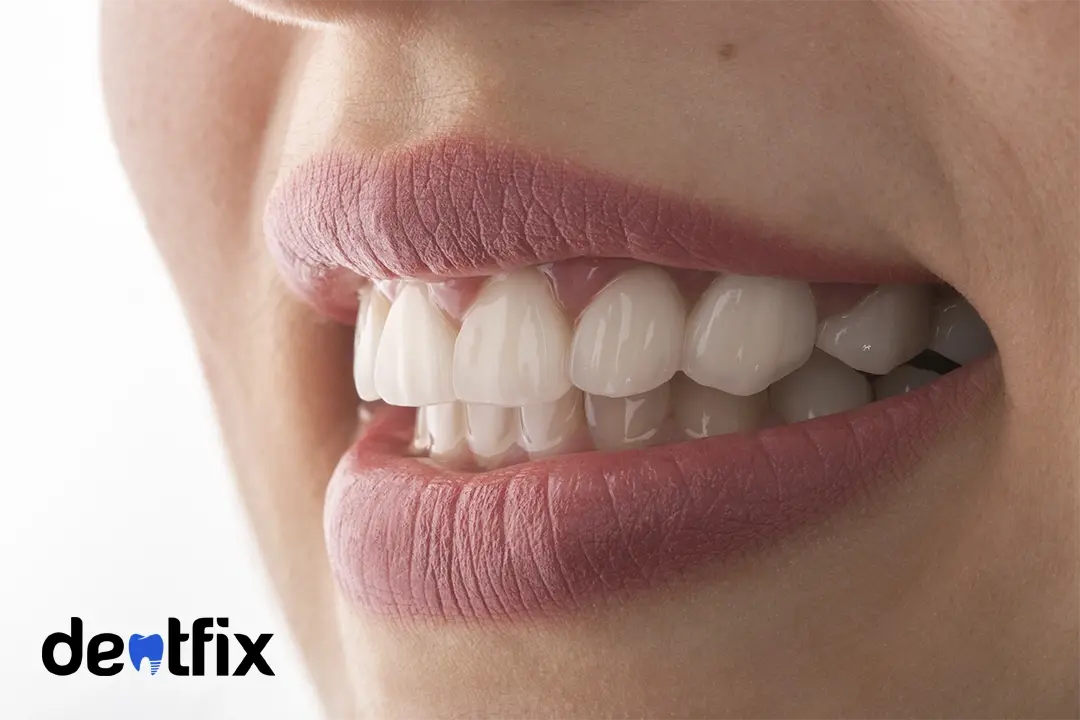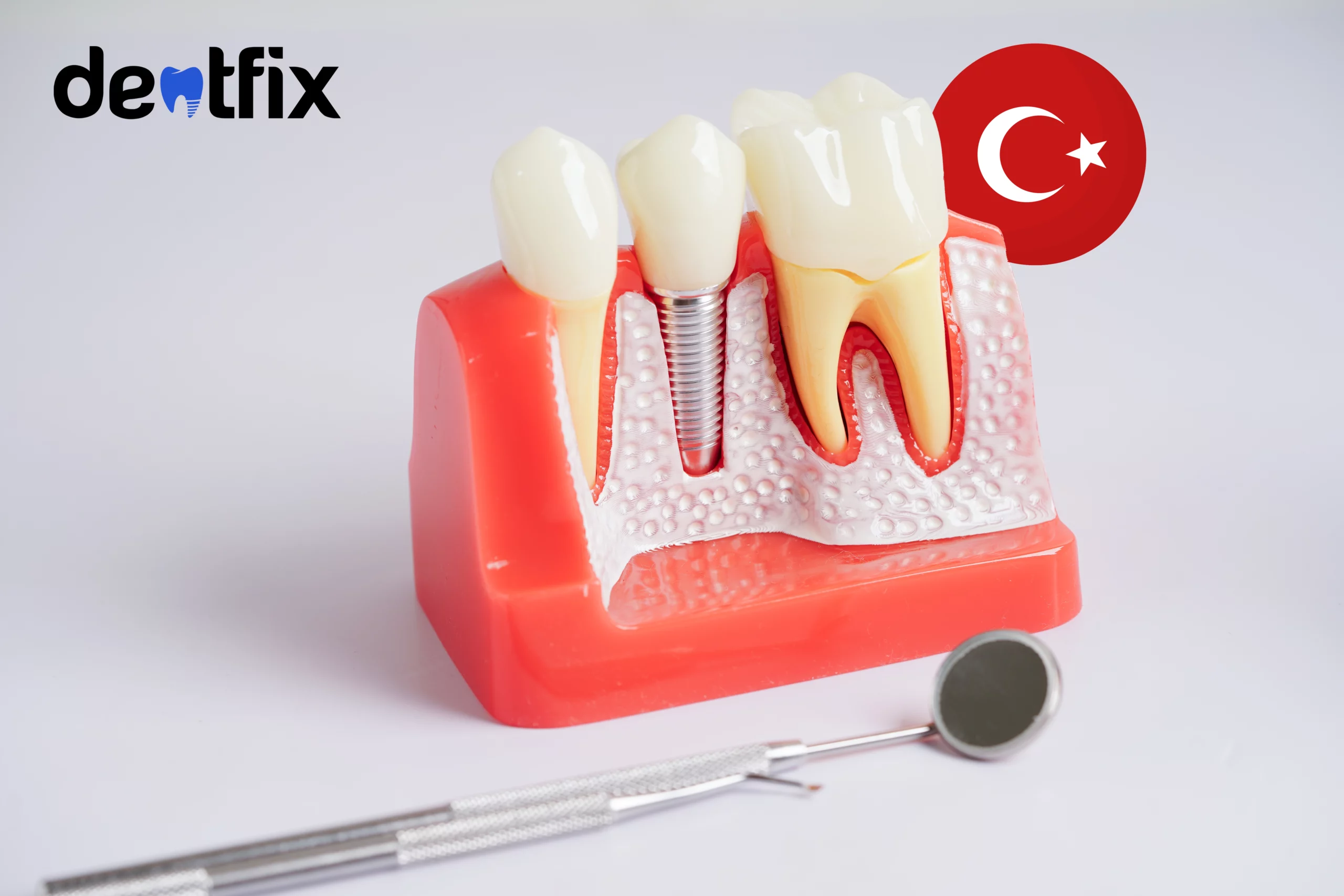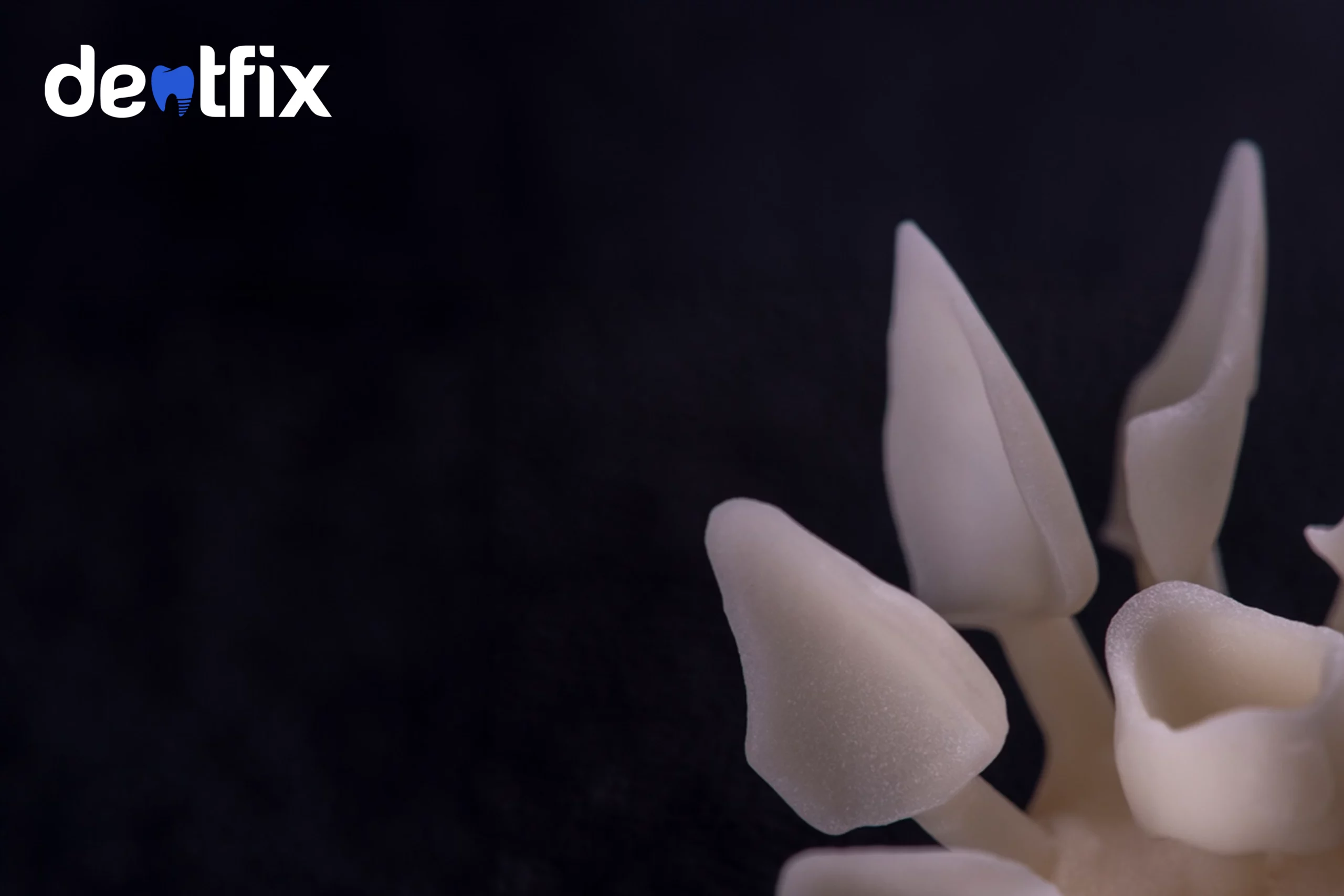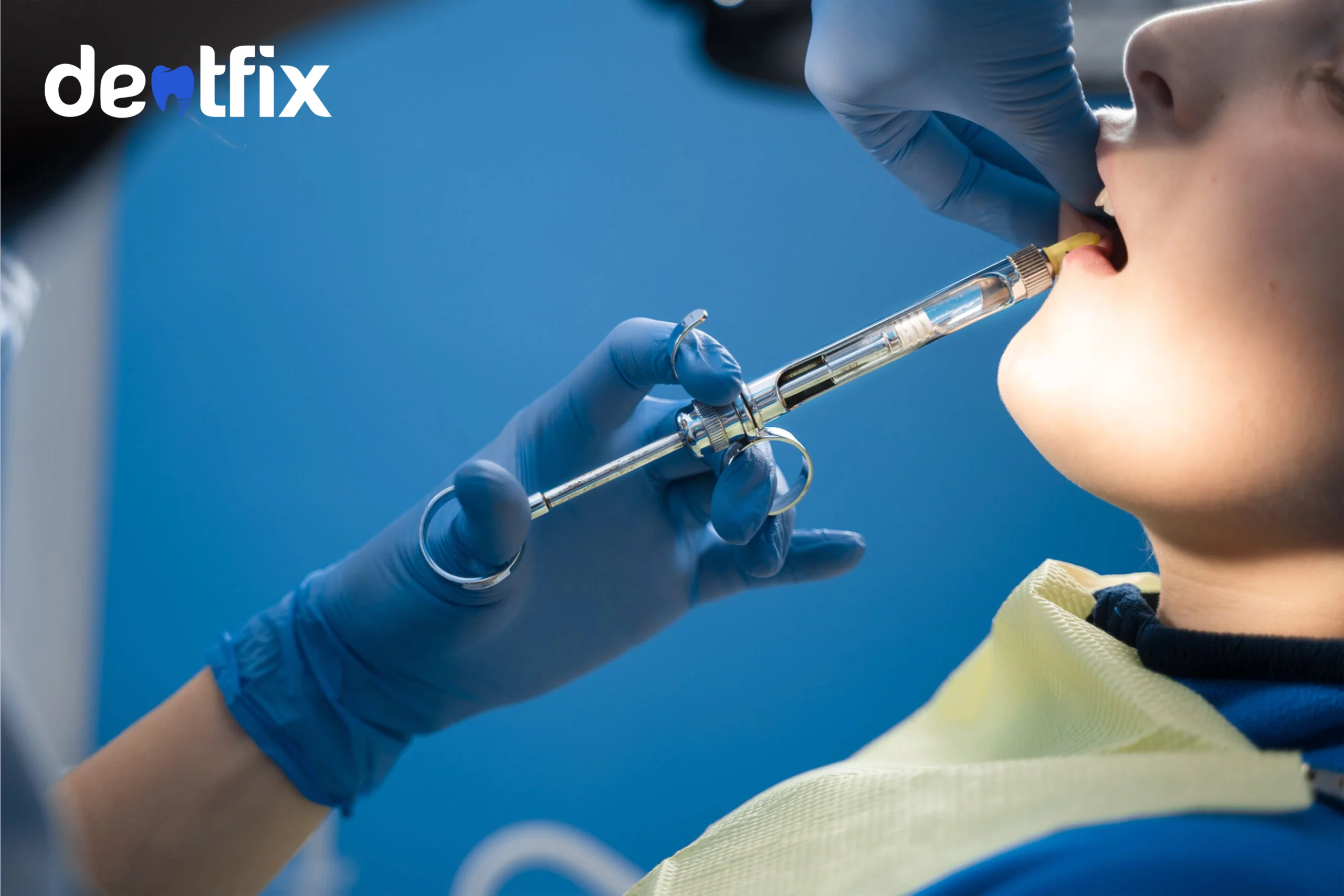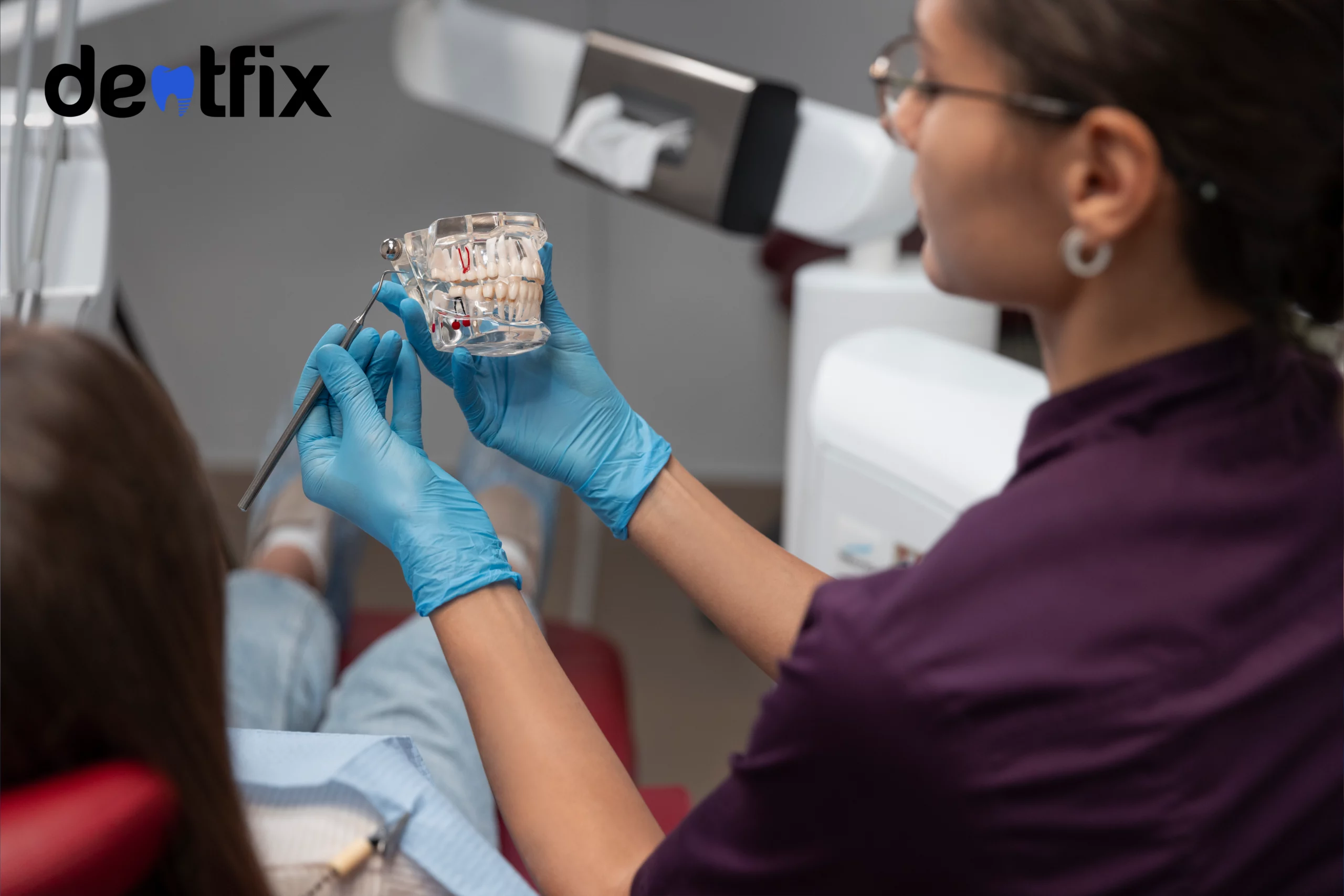Periodontal disease, or gum disease, is a serious complication that badly affects the gum and jawbone tissues. These are the tissues that support the implants as well as the natural teeth. Periodontal disease is also one of the main reasons lying behind the tooth loss. So many people with gum disease may need an implant. Also, many people with implants can experience gum disease too. That’s why can you get dental implants with periodontal disease is a topic that concerns many people.
In this article, we’ll discover these reasons we’ll answer the query can you get dental implants with periodontal disease. And we also will talk about everything about the relation between gum disease and dental implants.
Gum disease & Dental implants: Everything you should know
As we said before, it is a disease that affects the supportive tissues of your teeth and the implants. So, this is extremely important for getting implants or for protecting the implants you already have. If gum tissues are badly affected by the infections and start to recede, your implants or natural teeth will fall off eventually.
If you don’t have the implants but want to get them and you have gum disease, sorry but the implant procedure is likely to fail because of the disease. And the implant treatment can also make the situation of your gums and bones worse if it is applied while having gum disease. Now, we’ll see why and how the situation is like this:
Can you get implants with gum disease?
No! Even if there are people saying that the implants can be applied while the patient is under treatment, it’s medically wrong. What you have to do is to treat the periodontal disease first. After being sure that the disease is treated, you can get your implants.
However, sometimes the patient may need some operations like gum grafting or bone grafting for replacing the missing supportive tissues. After all, the implant has no connection with other teeth. They should reside in their own supportive tissues, so the condition of your gums and jawbones is one of the most important factors while getting implants.
Effects of gum disease on getting implants
To understand better the relationship between gum disease and implant procedure, we have to take a look at the gum disease effects. The implant should hold its place strong. If not, it can fail. And the gum disease should be treated firmly. An implant procedure may affect the healing process negatively. So, let’s see how gum disease work and why you can’t get implants with them in detail:
Gum and bone tissue loss: This is one of the most significant effects of periodontal disease. As the gums are affected by the infections spread from plaque accumulated in the gum line, you can start to see the symptoms. First, gums begin to swallow and they turn more reddish color. Then they start receding. After gums recede to a certain point, your bone tissue will also be affected and you start to lose your bone tissues. Meaning there will be no proper place for the implant to stay.
Risk of infection: In the case of periodontal disease, infections spreading all over gum tissue are already common. And if you try to get implants under these circumstances, it will dramatically increase the risk of serious infections.
Healing delay: As the implant procedure requires surgical interventions that’ll leave open wounds, the healing process has a vital importance for your implants. But if you have gum disease, inflammation of the gums and such symptoms will reduce the blood supply to the implanted area. Also, the infection can recur again and again as well. This can create a delay in the healing process easily.
The disease can spread: As the surgical operation is made on the gums, the infection can spread to this area if it wasn’t affected before. If the infection spread to the newly placed implant, it will be harder to hold its place. It won’t get fused with the jawbone properly and prevent gum healing.
Do dental implants reduce gum disease risk?
No! If you already have periodontal disease, it won’t help you to get implants. You have to get your tissues healed and treat the disease first. Otherwise, your implant will fail without a second chance. There is a positive effect of the implants on the bone tissue but it’s not the same for gum disease. It can’t reduce the risk of a bacterial disease.
Getting implants with gum disease: The whole timeline
Let’s say that you have gum disease and you want to have implants. Okay, you won’t get them at the moment. In fact, you shouldn’t. Don’t worry, you can still get them but you have to cure the disease and heal your tissues first. Without good soil, you can’t grow anything. But how can you treat gum disease and get your implants? Here is the whole timeline we made for you to understand the process clearly:
Consultation
The first step is consultation for sure. You should visit a dentist. If you have a chance, visit a periodontist and an orthodontist. Ask them for their opinions and create a plan together with them. They can give you the best advice.
Treating the gum disease
Let us repeat ourselves again: You have to get your gum disease treated before getting implants. It’s a necessity. And there are different treatment methods for this. Depending on your situation you can decide which ones you should have with your dentist:
Non-invasive procedures
These are non-surgical treatment methods especially effective in the early stages of gum disease. No surgery will be needed, just drugs and other simple methods for treatment. Some are also considered preventive treatments.
Dental prophylaxis: This is the cleaning and investigating of teeth by a dental professional. If the doctor thinks it is necessary, the prophylaxis can also contain antibiotic treatments or fluoride treatment.
Scaling and root planing: This is the cleaning of plaque buildup and tartar by a dental professional using professional tools for the surface of the teeth and the gum line. Tartar buildup is one of the biggest reasons behind gum disease.
Antibiotics: If the gum tissue is infected, showing signs of gum disease like swelling and bleeding, your dentist may prescribe you some antibiotics that will fight against bacterial infections.
Invasive procedures
These are the treatment methods with surgical interventions. Some people with severe receding gums and bones may need these kinds of treatments to replace the missing tissues.
Bone grafting: Replacement of the missing bone tissue with cement that will become more concrete and fuse with the natural bone tissue. It may require a relatively long healing process but it is necessary especially if you want to have implants with significant bone loss.
Gum grafting: Gum grafting is also an operation that will replace the missing gum tissue by stretching the already existing gum tissue to the empty area. If you don’t have enough gum tissue for this, the dentist may transplant the gum tissue taken from somewhere else in your mouth to the gum line.
Laser treatment: It is a treatment that uses laser energy to remove the tartar, plaque, and tissues affected by gum disease. The laser doesn’t harm your healthy tissues during the treatment, so it is totally safe. Also, it can be used to stimulate the gum tissue for healing.
Gum flap surgery: Flap surgery aims to clean the periodontal pockets. These pockets occur when the plaque and tartar proceed to the tooth roots. The dentist opens the gum tissue in order to clean these areas of plaque and tartar. Then they stitch back the gums around the teeth.
Implant placement
After your gums are treated and got well, you’re ready for the implant placement. If you had bone grafting, it will take longer to place the implants because the bone cement placed in the area should get concrete and fused with the natural bone tissue. This process generally varies from 3 to 6 months. When the missing bone tissue is replaced, you can get your implants. For this, the dentist opens the gum tissue and penetrates the implant to the bone tissue. After that, you need to be careful with your implant for a while. The healing process is quite important for the success of the procedure.
Recurrent gum disease after implants
This can happen. You have to take some precautions for it. First of all, you have to maintain a good oral hygiene routine and follow the advice of your dentist. People who already experienced periodontal disease have a higher risk of implant failure. To prevent such a failure, you have to perform good care. Especially the bone tissue is really important for your implant’s success as well as you don’t get loose teeth. If you see any signs of reoccurring gum disease after getting your implants, you have to go to a dentist and get checked as soon as possible.
Signs of reoccurring gum disease
They are the same, classical gum disease signs. We can count them as the followings:
- Red and swollen gums
- Bleeding gums
- Periodontal pockets in the gumline
- Receding gums
- Bad breath
How to protect your implants?
The first and most important thing is to have a good oral hygiene routine. You have to brush at least twice a day, floss at least once a day, and use mouthwash. These are vital. But sometimes these can not be enough to provide good protection. You may also need to reconsider your bad habits. For example, smoking and alcohol dramatically increase the risk of gum disease.
You also have to have a good immune system as it fights bacterial invasions on your gums. So protecting your overall health with a notorious diet and regular exercise is also important. And of course, you have to visit your dentist regularly. Everyone needs a professional eye for such diseases. And don’t forget that it’s better to be aware and take precautions than ignoring or trying to solve complex problems on your own.
When to visit your dentist?
Actually, you have to visit the dentist for regular check-ups to detect any problem in the early stage. This is important for all of us. However, sometimes you may need also unusual visits to the dentist. But under what conditions? First of all, if you notice that you have plaque and tartar accumulated on your tooth surface or gumline, even if you don’t have the other symptoms, you have to visit a dentist and get them removed. Because they are the main reason for the gum disease. If you notice that there are pockets occurring gumline, or red, bleeding, and swollen gums, that means that you probably have gum disease as well.
If you realized that your gums are receding, and your tooth roots are exposing, that means you have severe gum disease. What you have to do is to get treatment as soon as possible before the situation gets worse.
References:
Durrani F, Shukla A, Painuly H. Implant therapy in patients with chronic periodontitis: A short follow-up with a successful outcome. J Adv Periodontol Implant Dent. 2019 Aug 31;11(1):39-45. doi: 10.15171/japid.2019.007. PMID: 35919623; PMCID: PMC9327471. (link)
Darby I. Risk factors for periodontitis & peri-implantitis. Periodontol 2000. 2022 Oct;90(1):9-12. doi: 10.1111/prd.12447. Epub 2022 Aug 1. PMID: 35913624; PMCID: PMC9804916. (link)
Bornes R, Montero J, Correia A, Marques T, Rosa N. Peri-implant diseases diagnosis, prognosis and dental implant monitoring: a narrative review of novel strategies and clinical impact. BMC Oral Health. 2023 Mar 30;23(1):183. doi: 10.1186/s12903-023-02896-1. PMID: 36997949; PMCID: PMC10061972. (link)
